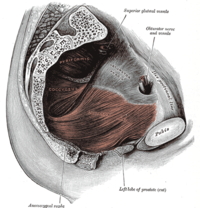
Photo from wikipedia
Background: Medical devices are becoming more complex, and doctors need to learn quickly how to use new medical tools. However, it is challenging to objectively assess the fundamental laparoscopic surgical… Click to show full abstract
Background: Medical devices are becoming more complex, and doctors need to learn quickly how to use new medical tools. However, it is challenging to objectively assess the fundamental laparoscopic surgical skill level and determine skill readiness for advancement. There is a lack of objective models to compare performance between medical trainees and experienced doctors. Methods: This article discusses the use of similarity network models for individual tasks and a combination of tasks to show the level of similarity between residents and medical students while performing each task and their overall laparoscopic surgical skill level using a medical device (eg laparoscopic instruments). When a medical student is connected to most residents, that student is competent to the next training level. Performance of sixteen participants (5 residents and 11 students) while performing 3 tasks in 3 different training schedules is used in this study. Results: The promising result shows the general positive progression of students over 4 training sessions. Our results also indicate that students with different training schedules have different performance levels. Students’ progress in performing a task is quicker if the training sessions are held more closely compared to when the training sessions are far apart in time. Conclusions: This study provides a graph-based framework for evaluating new learners’ performance on medical devices and their readiness for advancement. This similarity network method could be used to classify students’ performance using similarity thresholds, facilitating decision-making related to training and progression through curricula.
Journal Title: Surgical Innovation
Year Published: 2021
Link to full text (if available)
Share on Social Media: Sign Up to like & get
recommendations!